‘To the ruler, the people are heaven; to the people, food is heaven.’ —Ancient Chinese Proverb
Food is heaven in Chinese culture. Visit any of China’s twenty-two provinces shows and you are sure to find food spilling out of restaurants, bars and street stalls at scintillating speed.
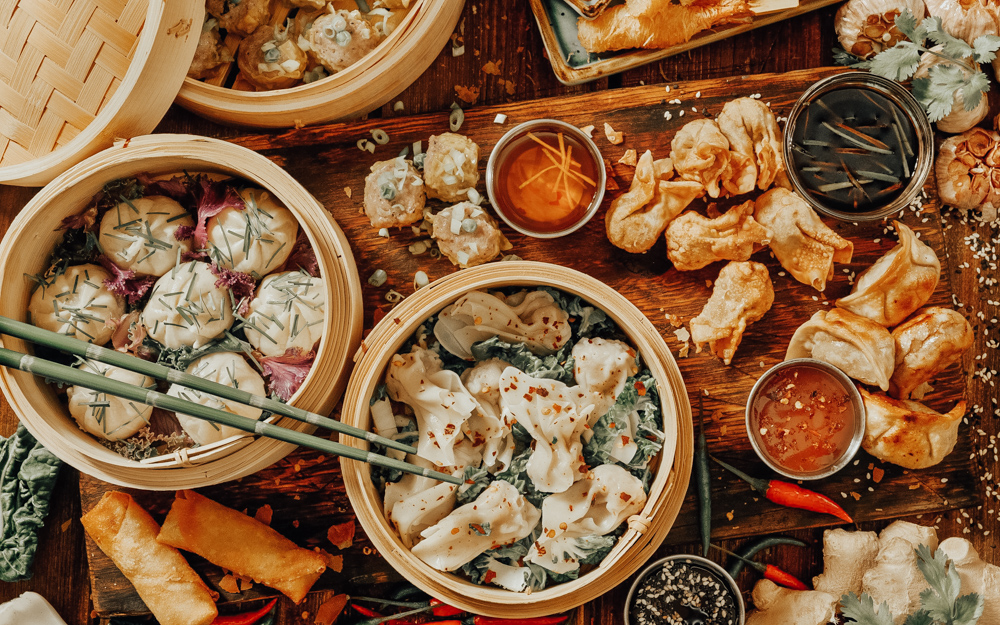
China is a country that treats us to eight major cuisines (and anything up to eleven depending on who you talk to) across its provinces from Sichuan to Shangdong. Emphasis on freshness, the purpose of each ingredient, and social togetherness creates Chinese cuisine’s unique feel, making food an essential part of any gathering or celebration.
Dim sum 點心 — Cantonese sharing dishes which translate to ‘touch the heart’ — encapsulate this spirit of togetherness perfectly as does Chinese Hot Pot or barbecue.
Each region holds its own distinct spirit and style of cuisine, and a staggering variety of flavours, aromas and textures tingle tastebuds long after eating.
While a Western idea of Chinese food might be a greasy takeaway authentic Chinese dishes are often incredibly healthy – full of fresh vegetables, meat, and light carbs like rice and noodles. From a sea of delicious foods, here we share with you our top 11 mouth-watering Chinese foods to get you licking your lips.
Jiaozi (jiǎo zǐ 饺子)
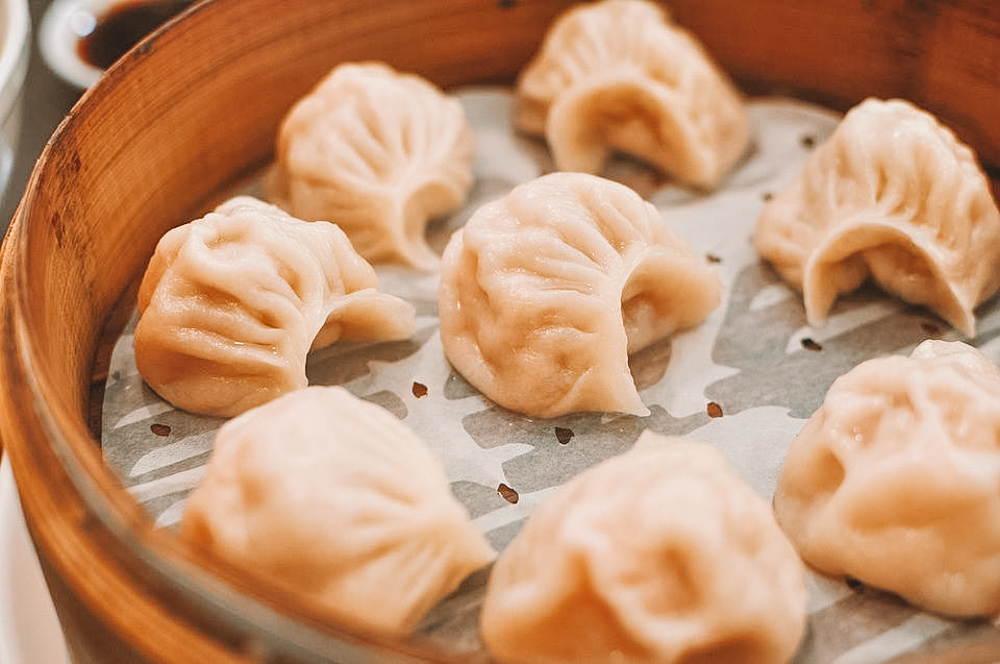
A light dough wraps around a filling of mouth-watering meats and vegetables. Your teeth sink in and are greeted with a wash of unforgettable flavour. True euphoria. This style of Chinese dumpling is commonly eaten during Chinese New Year celebrations and believed to bring great fortune!
It’s believed jiaozi were created over 1,800 years ago by doctor Zhang Zhongjing to cure frostbitten ears (see their ear-shape today). Try them boiled, steamed, or pan-fried and dipped in soy sauce, chilli, or sesame oil or black vinegar.
Chinese Hot Pot (火锅)
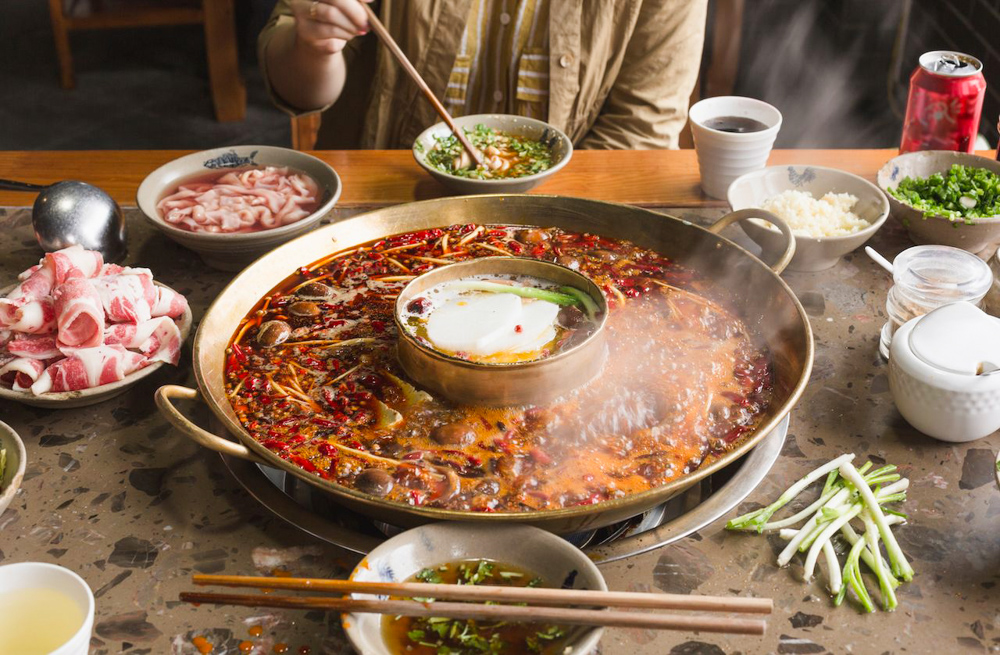
What better than a simmering pot of tasty, tingly hot broth to warm your hearts and bring people closer together on a cold night? Throw in mushrooms, tofu, leafy greens, carrots, potatoes, noodles, thinly sliced meats, seafood and much more — and hit sensory overload.
Share conversations with friends around the table (at home or in a restaurant) as a variety of moist flavours caress your tastebuds and lift your spirits.
Beijing Peking Duck (北京烤鴨)
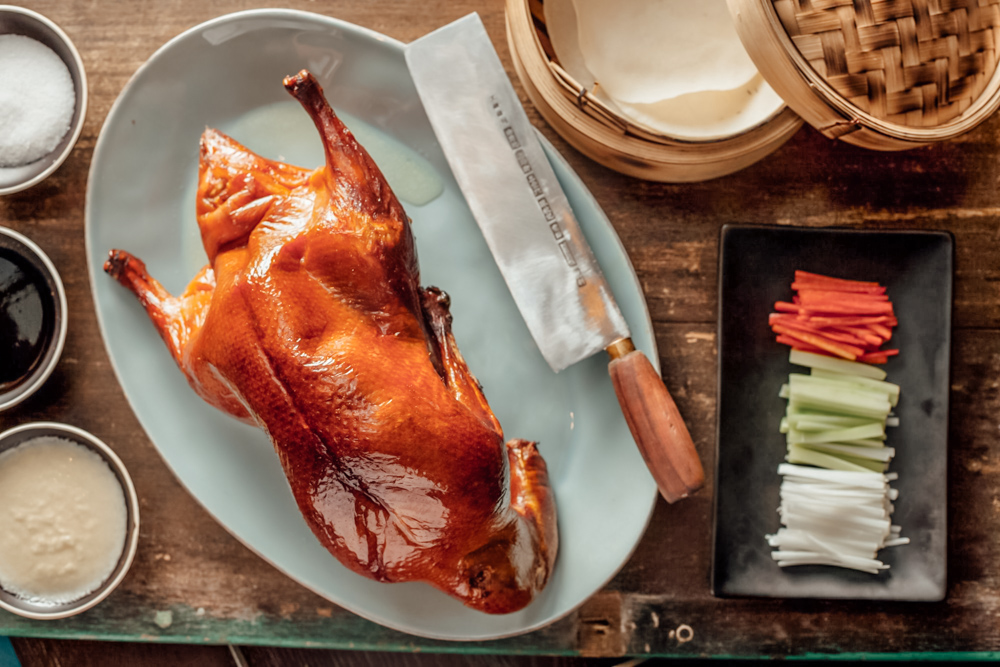
Peking duck is the definitive food of Beijing. Dating back to Yuan Dynasty (1279–1368), Beijing roast duck is called ‘the first dish to taste in China’. It’s crispy skin outside tender and moreish meat account for its obsession.
In a restaurant, the chef will emphatically cut the duck into up to 100 thin pieces at the table (each with crispy skin). Place it in a thin pancake, add green onion, shallot, plum sauce, fresh cucumber, and garlic paste – and welcome to ultimate pleasure.
Mapo Tofu 麻婆豆腐
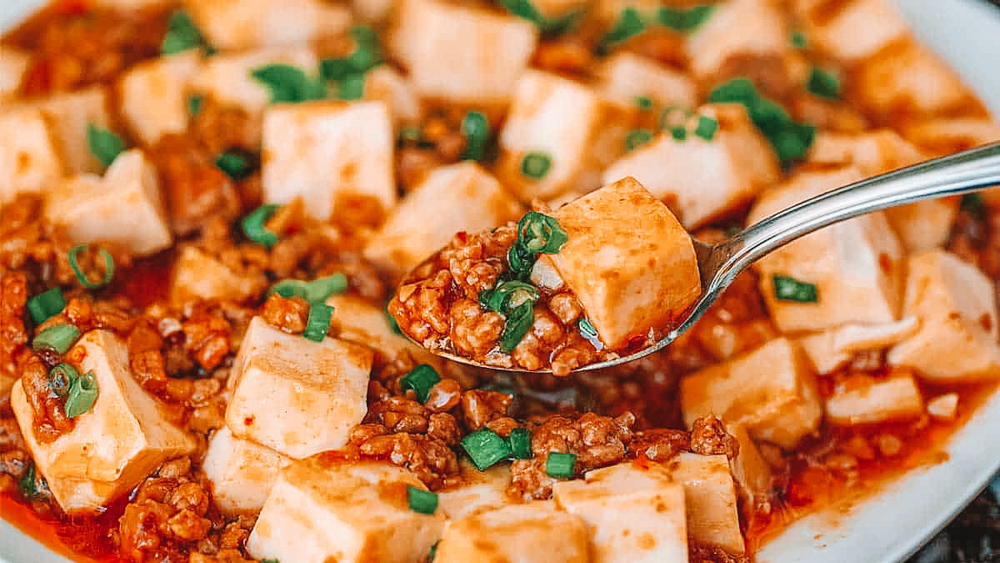
The pride of China’s Sichuan province, mapo tofu is an aromatic and spicy tofu dish named after a restaurant owner in Chengdu. Sichuan pepper, chilli bean paste and powder give it a mala (麻辣) feeling: a numbing hotness.
Add the tenderness of the tofu, the sensual aroma of fermented black beans (douchi) and minced meat, plus the moisture of the sauce. Step into food heaven.
Read More: Asian Cookbooks for Inspiring Home Cooking
Yangzhou Fried Rice 扬州炒饭
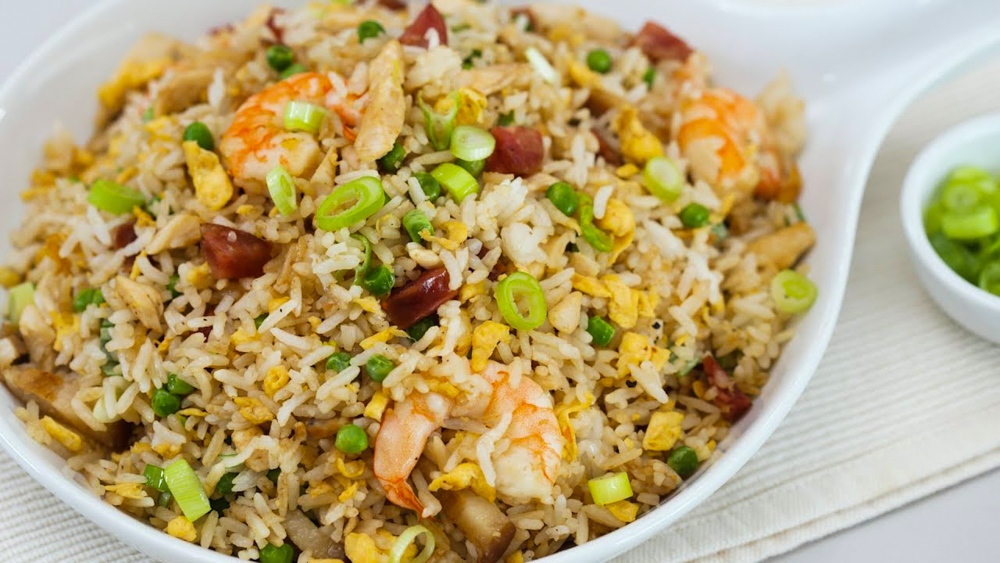
Fried rice is a big hit across all of China. Wok-fried rice with (often chicken, egg and veg) that can feed the whole family! However, Jiangsu Province’s Yangzhou fried rice is particularly scrumptious – including egg, carrot, green peas, green onion, shrimp and Chinese ham.
Known as special or house fried rice in the West, this delicious mix of carefully-chopped ingredients sets it apart.
Knife-Cut Noodles (dao xiao mian, 刀削面)
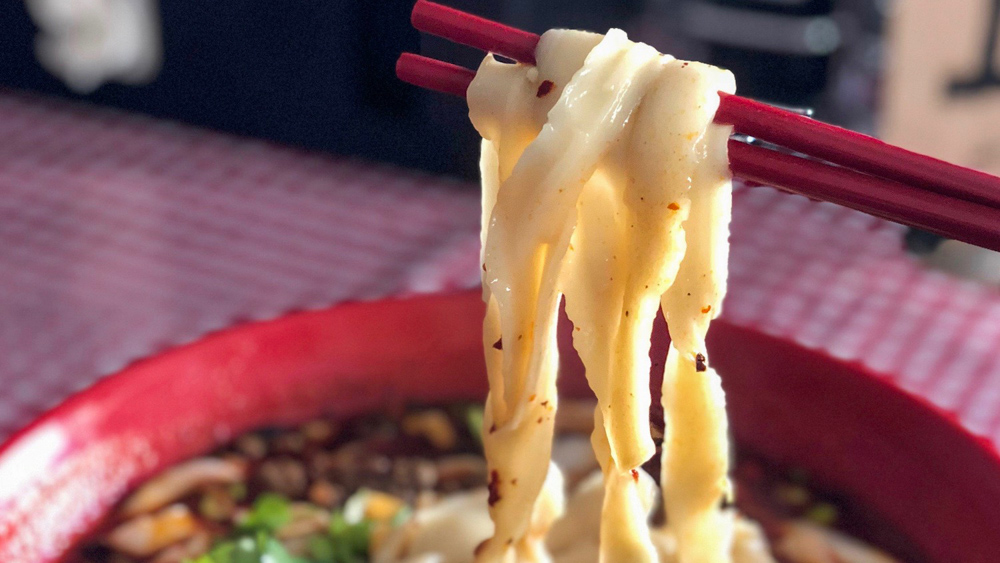
Of the Shanxi province, knife-cut noodles (刀削面, also called dao xiao mian) scream authentic China. As the name suggests, a sharp knife shaves off strips of dough to create elegant and long noodles.
This is a true art form perfected by years of training (it’s believed an expert chef can shave 200 noodle strands in 1 minute!). Often called ‘longevity noodles’, many devour them in the hope of a long and prosperous life. As if they needed another reason.
Moon Cake 月餅
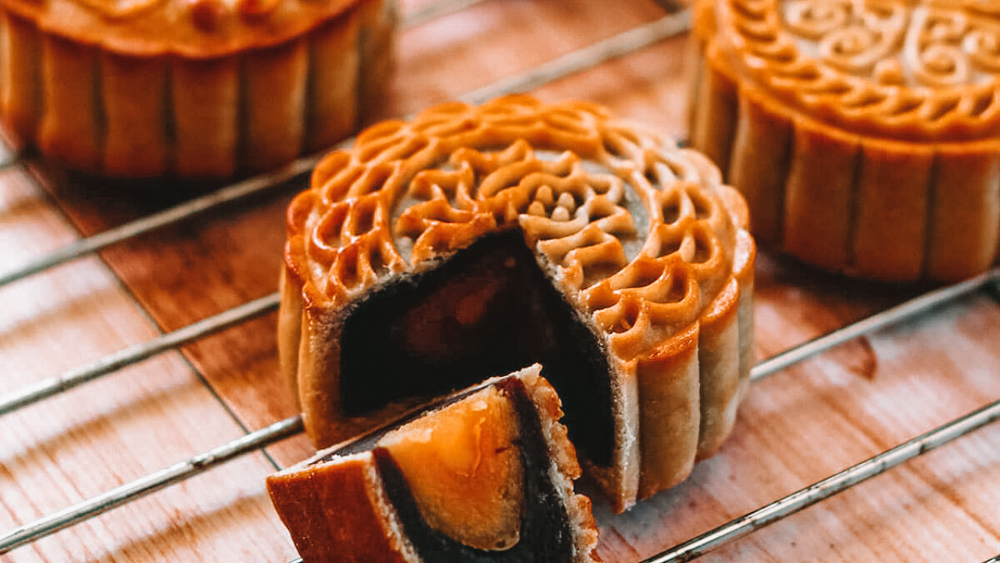
A moon cake or geppei is a delicious delicacy associated with China’s Mid-Autumn or Moon festival (15 August).
A tender pastry skin envelops sweet fillings including red bean paste, lotus seed paste, dried plum, and egg yolk (symbolising the moon).
Its roundness symbolises family togetherness and pays homage to the moon during this festival.
Chinese Spring Rolls (春卷)
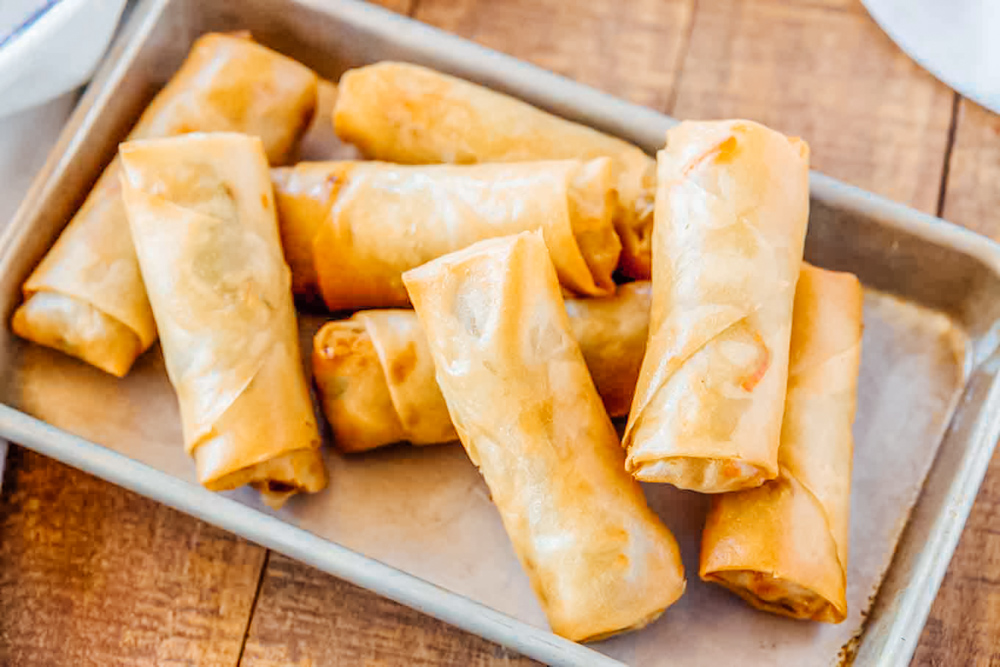
China’s take on spring rolls is the ultimate crispy comfort food. Dating back to the Eastern Jin Dynasty (265 AD to 420 AD) people used to fill pancakes with vegetables to mark the first day of Spring.
Still today, Chinese spring rolls are essential part of the Spring Festival. These golden cynclindral bars of shredded meat and vegetables symbolise wealth and prosperity. Across China, they are a hugely popular appetizer dim sum choice!
Cheung Fun (猪肠粉)

Originating in Guangdong Province, cheung fun is steamed noodles made from rice (called shahe fen). These noodle rolls can be filled with delicious vegetables, shrimp, beer and more – usually eaten as part of dim sum.
It’s made with flour and water – the mixture ratio of which alters its thickness, transparency and stretchiness. Hugely addictive and morish, cheung fun is a popular street stall option in Hong Kong especially – often served with soy sauce, hoisin sauce, and sesame sauce.
Kung Pao Chicken (宫保鸡丁)

With a sensual hit of spicy, salty and sweet flavour, kung pao chicken (or gong bao ji ding) is an explosion of taste.
Traced back to Sichuan Province (south-western China), boneless marinated chicken chunks, peanuts, chilli peppers are stir-fried—to perfection – leaving a finger-licking flavour that will leave you longing for more long after its finish.
Char Siu (Chinese roast pork, 叉燒)
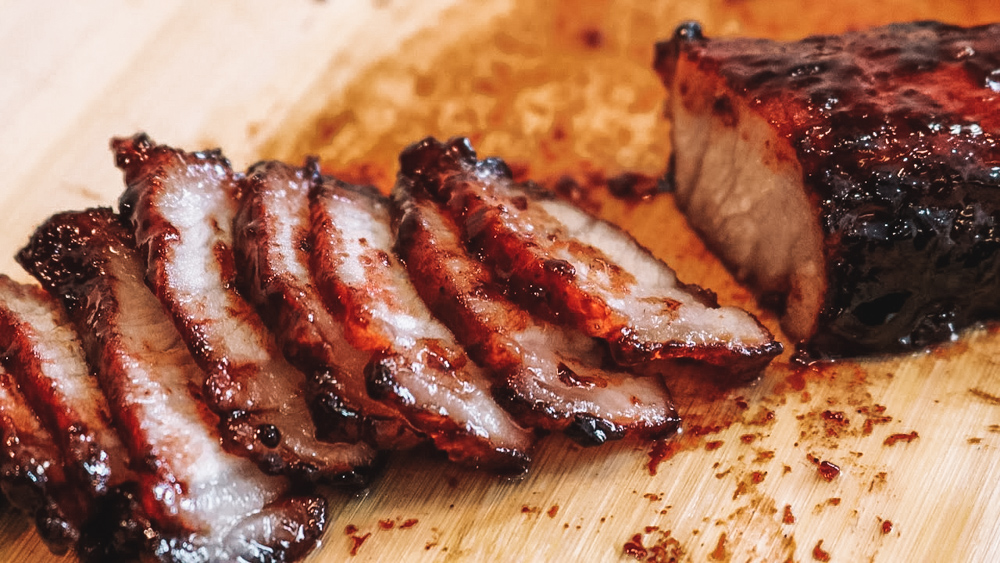
Char siu is Cantonese roasted pork meat that melts in your mouth. This red-coloured and sticky pork is for finger-licking foodies. Char sui translates to ‘fork roasting’ as the pork is skewered with forks before roasting it and cutting into strips.
It’s marinated in sugar, dark soy sauce, hoison sauce and spices for 24 to 48 hours to give incredible flavour, and given a reddy colour from fermented red bean curd. One of most jaw-droppingly delicious treats all of China, char siu is also enjoyed in steamed buns and some special fried rice.
Bao (包子),or Bāo zǐ

Originating from Northern China as a variation of Chinese ‘Mantou,’ (a plain steamed dumpling often compared to bread), baozi or bao are fluffy buns that fill you with happiness. They often come steamed and contain a variety of fillings like pork and vegetables.
In contrast to jiaozi dumplings (made from water and flour), bao buns use leavened dough which calls for the use of yeast. The end result is a soft melt-in-your-mouth moment that you take with you to your grave.
Tip: If you’d like to learn more about the history of Chinese food we recommend The Emperor’s Feast:A History of China in Twelve Meals by Jonathan Clements.
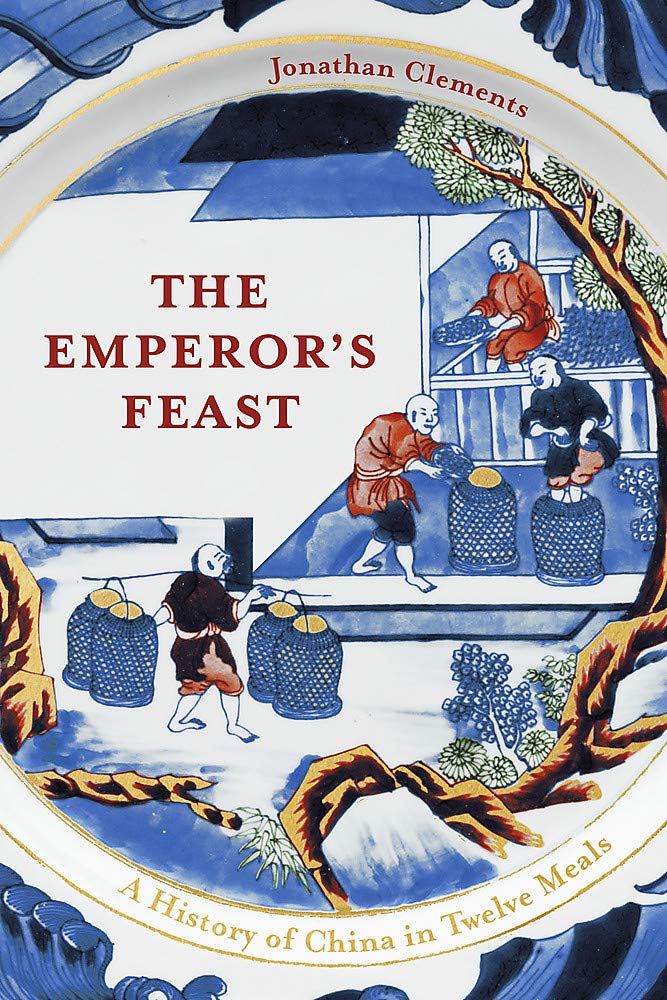
Embark on your own food adventures this year! Whether you’re plotting a trip or even on living and working in China – take these foods as your guide!



